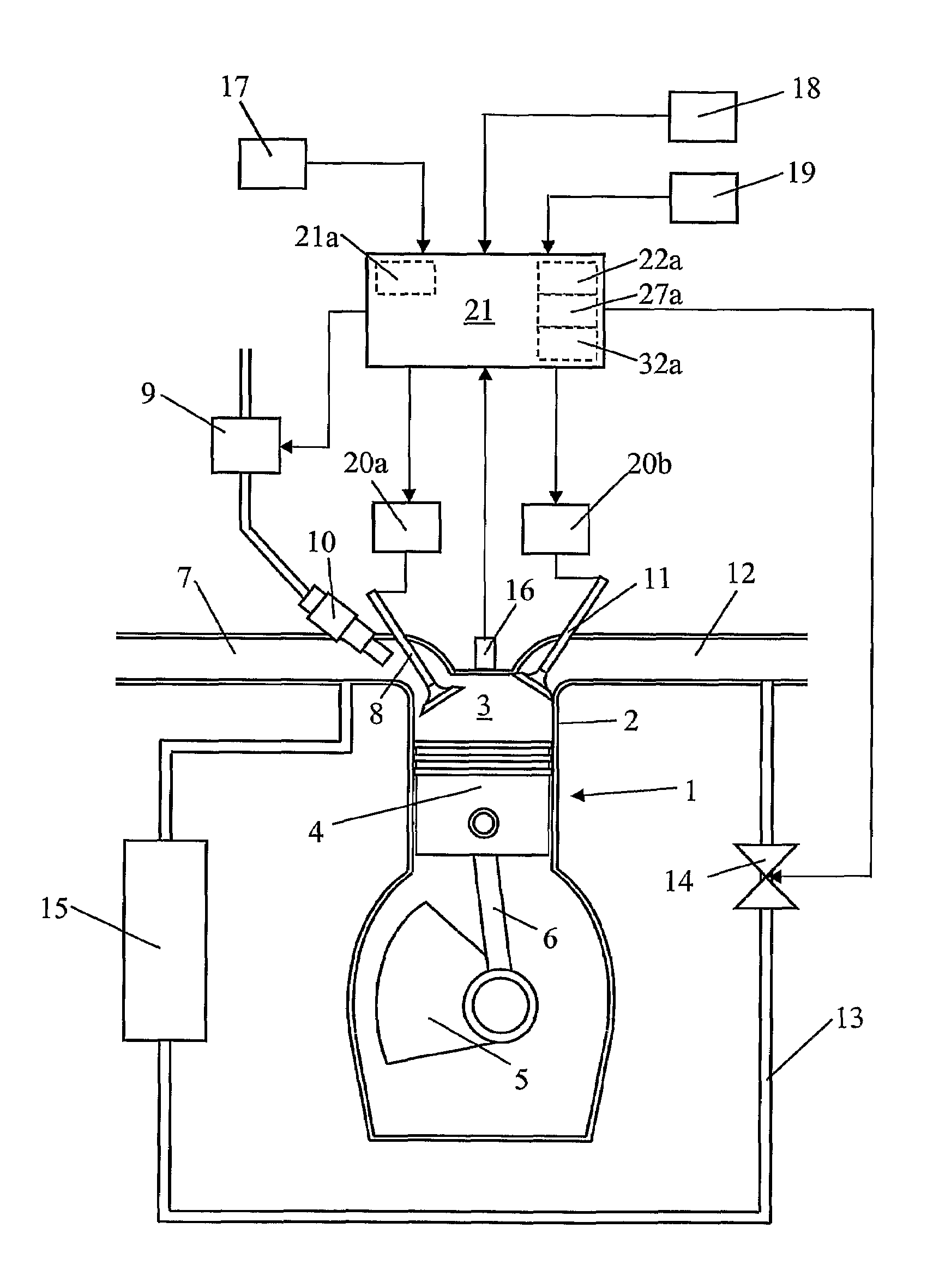Arrangement and method for controlling a combustion engine
a technology of combustion engine and crankshaft, which is applied in the direction of electrical control, process and machine control, instruments, etc., can solve the problem of difficulty in controlling the self-ignition of the fuel mixture to the correct crankshaft angle, and achieve the effect of varying the effective compression ratio
- Summary
- Abstract
- Description
- Claims
- Application Information
AI Technical Summary
Benefits of technology
Problems solved by technology
Method used
Image
Examples
Embodiment Construction
[0024]FIG. 1 depicts an arrangement for controlling a four-stroke combustion engine 1 of the type in which a homogeneous mixture of fuel and air is compressed until self-ignition of the mixture is caused by the heat developed during the compression. Such an engine 1 is usually called an HCCI (homogeneous charge compression ignition) engine. An HCCI engine may be regarded as a combination of an Otto engine and a diesel engine. The engine 1 is depicted here with one cylinder 2 but may of course have substantially any desired number of such cylinders 2. The engine 1 comprises a combustion chamber 3 which is bounded downwards in the cylinder 2 by a movable piston 4. The piston is connected to a crankshaft 5 via a connecting rod 6. The motion of the piston 4 in the cylinder 2 converts to rotary motion of the crankshaft 5.
[0025]When the piston 4 moves downwards in the cylinder 2 and an inlet valve 8 is open, air is drawn into the expanding combustion chamber 3 via an inlet line 7. At the ...
PUM
 Login to View More
Login to View More Abstract
Description
Claims
Application Information
 Login to View More
Login to View More - R&D
- Intellectual Property
- Life Sciences
- Materials
- Tech Scout
- Unparalleled Data Quality
- Higher Quality Content
- 60% Fewer Hallucinations
Browse by: Latest US Patents, China's latest patents, Technical Efficacy Thesaurus, Application Domain, Technology Topic, Popular Technical Reports.
© 2025 PatSnap. All rights reserved.Legal|Privacy policy|Modern Slavery Act Transparency Statement|Sitemap|About US| Contact US: help@patsnap.com



